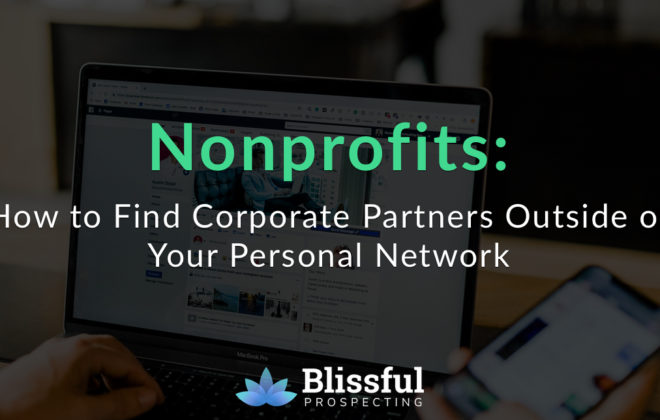
Many development teams dread cold outreach. It's labor-intensive. And rejection...it's like high school all over again.
The easier way is to network and land introductions to decision-makers.
I'm all for this approach—especially if it's producing a solid pipeline of corporate partners for you. Networking, referrals, and word of mouth should be a focal point of your corporate development strategy.
But what happens when those sources dry up? Or they're not producing the volume you need to hit your fundraising targets?
Many nonprofits describe this as "hitting a wall" in corporate development.
You've tapped your personal network. And your board has tapped theirs.
What we've found works best when this happens is to supplement your personal connections with strategic cold outreach.
No, this doesn't involve spamming people. Or "spray and pray" methods where you email blast thousands of people with your unsolicited newsletters.
This is a targeted approach that requires upfront research and personalization. You have a reason for reaching out.
It's what we specialize in at Blissful Prospecting that's helped our clients connect with brands like REI, Victoria's Secret, Hanes, Carhartt, Fabletics, and many more.
Here's the five-step process for finding and connecting with corporate partners outside of your personal network:
This approach works best when you model your past successes. This way you have practical examples of partnerships you can share with relevant brands.
If your goal is to partner with more apparel brands, it's great to have a few examples of apparel brands you've partnered with.
Start by examining your most successful partnerships in the last few years. Find the partners that...
Once you have those partners listed, use a program like Apollo.io (free plans) or LinkedIn Sales Navigator (paid plans starting at $79.99 per month) to research the companies.
Apollo.io is great because you can upload a bulk list of companies into their system.
Look for patterns in the following:
Hold onto this information.
On a spreadsheet or word document, take the information you gathered and write out your requirements for an ideal partner.
Go a few steps deeper than the patterns you identified above:
Here's an example for a nonprofit that works with shoe/apparel brands:
Using Apollo.io or LinkedIn Sales Navigator, create a profile using the Ideal Partner Profile you came up with above.
Start looking at companies that meet your criteria.
This is known as an account-based approach in marketing and sales speak. It's most efficient to build a list of companies you want to partner with first, and then to find the contacts at those companies.
Now it's time to identify decision-makers and champions at the brands on your hitlist.
Again, emulate your past partnerships. Who were you interacting with at those companies? What were their job titles?
We find that the best people to reach out to are typically in marketing, PR, and/or corporate responsibility. Founders/owners are also great if the company is under a few hundred employees.
We use Skip Miller's approach in Selling Above and Below the Line to build personas. He recommends the following:
Here's an example of a list of personas:
Once you have the personas, you can start pulling contact information.
Again, I recommend staying in Apollo.io because everything's there in one place.
Here are the tools you can use to find email addresses:
We use a framework we built called the REPLY Method for the email structure.
Once you've written your emails, it's time to start sending them. To emphasize again—if you're not willing to research and personalize the outreach...DO NOT BOTHER sending the emails.
You'll look spammy, get your domain blacklisted, and tarnish your nonprofit's reputation.
Sending emails is a lot of work. Fortunately, there are many tools that can help you automate some of the mundane parts of following up.
I recommend using a Sales Engagement Platform. These are tools that high volume sales teams use to manage and automate the activities associated with cold outreach.
You can use tools like MixMax if you're using Gmail (plans start at $29/mo) or YesWare if you're using Outlook (plans start at $35/mo).
What are your biggest challenges in breaking out of your personal network to build corporate partnerships? Leave a comment and I'll help point you in the right direction.
More Resources: